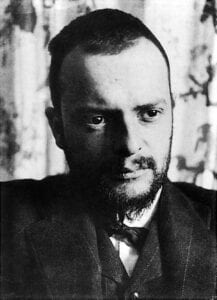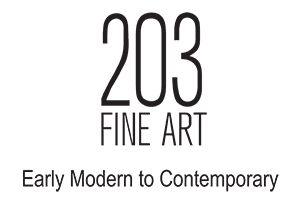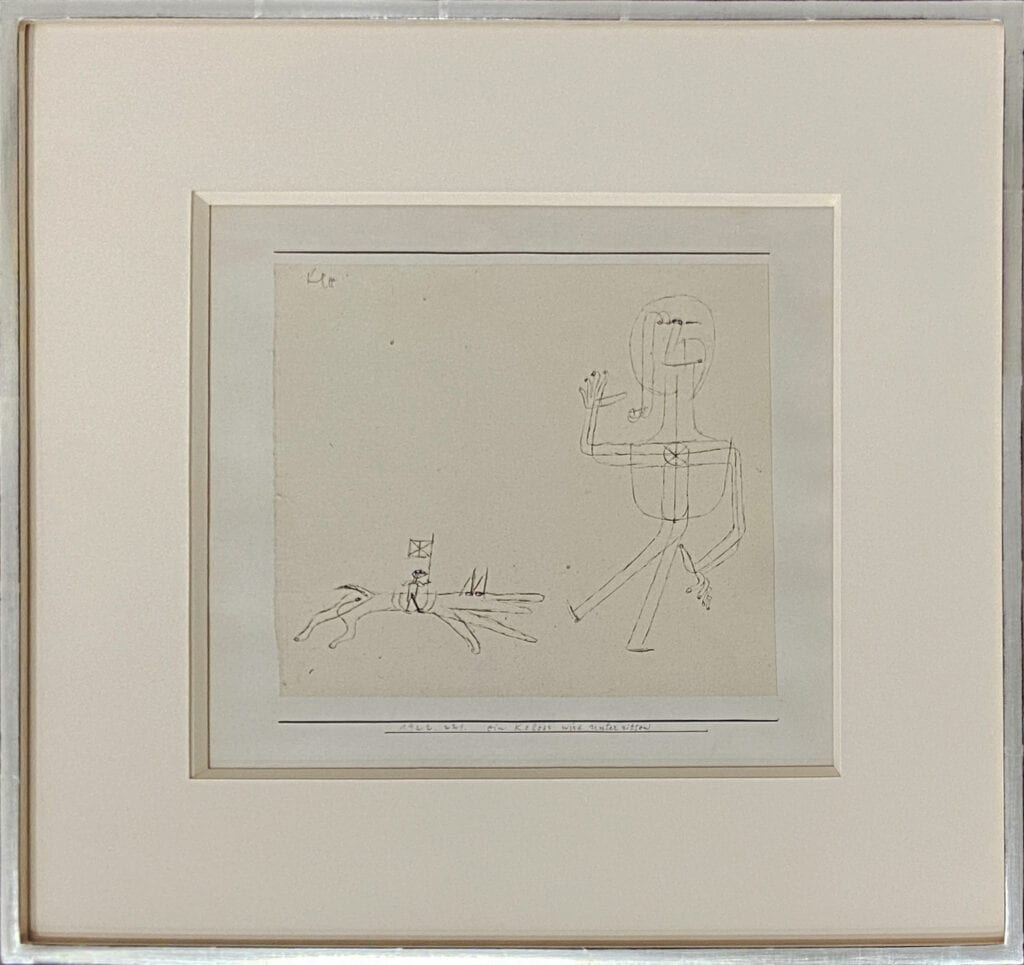Paul Klee (1879-1940)
Biography
Paul Klee was born in Münchenbuchsee near Bern, Switzerland, in 1879. He was raised by a family of musicians, his father a music teacher and his mother a vocalist. He struggled with the decision to pursue the visual arts versus his musical talents, as his parents would have preferred. He studied under Heinrich Knirr, as well as at the Academy of Fine Arts in Munich.
In 1912, Klee was invited to take part in an exhibition with der Blauer Reiter, or the Blue Rider, a group of avant-garde artists including Wassily Kandinsky and Franz Marc. Shortly thereafter, Klee was drafted in World War I. Following his service, Klee moved to Dessau to live with Kandinsky. Klee began teaching bookbinding, stained glass and mural painting workshops at the Bauhaus, where he worked from 1921 - 1931. His innovative pedagogies continue to influence how art and design is taught today. After the Bauhaus, Klee taught at the Academy of Fine Arts in Düsseldorf until 1933, when he fled to Switzerland after his art was deemed "degenerate" by the Nazi party. Following his struggle with a progressive autoimmune disease, Klee died in 1940 in Bern.
Paul Klee's work is associated with numerous movements - from Surrealism, to German Expressionism, to Dada. He experimented with pointillism, developed visual hieroglyphs, and worked with line and form in groundbreaking methods. His work is held in major public and private collections, and he is considered to be a father of abstract art.
Sources:
Zentrum Paul Klee, Bern, Switzerland

Schools of Study
Academy of Fine Arts, Munich, Germany, 1898
Partial List of Collections
Selected Exhibitions
Galerie Hans Goltz, Munich, Germany, 1920
Société Anonyme, New York, 1924
Galerie Vavin-Raspail, Paris, France, 1925
Museum of Modern Art, New York, 1930

